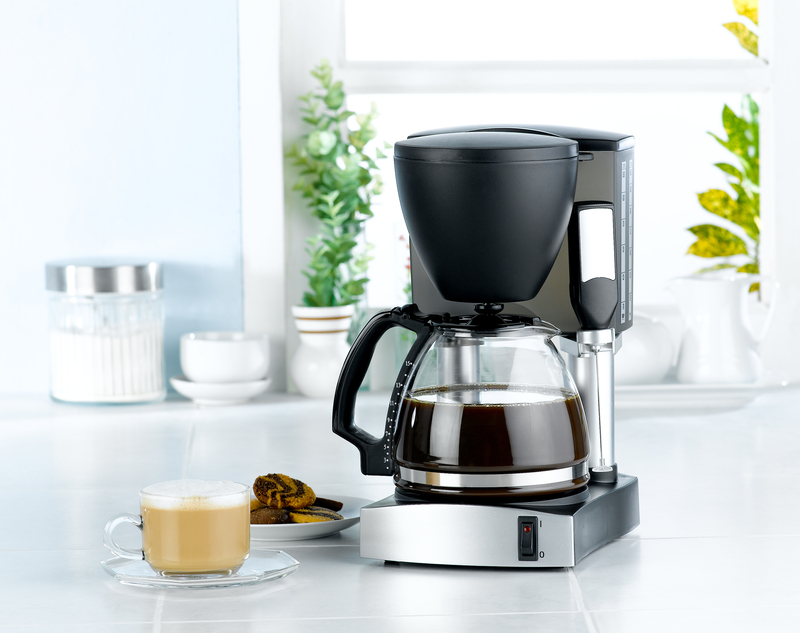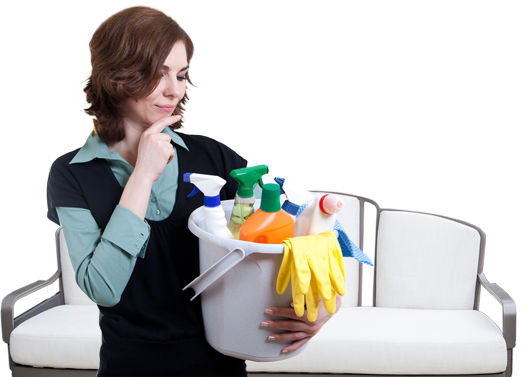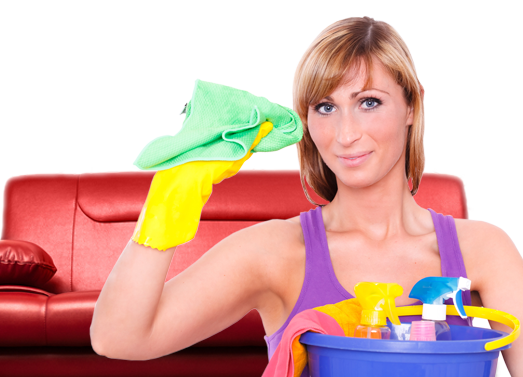Say Goodbye to Mold: Transform Your Bathroom Today
Posted on 26/06/2025
Say Goodbye to Mold: Transform Your Bathroom Today
Introduction: The Stealthy Invader Lurking in Your Bathroom
Mold in the bathroom is an all-too-common problem, affecting homes of all ages and styles. High humidity, water splashes, and limited ventilation create a perfect environment for stubborn mold spores to thrive. Not only does mold look unsightly, but it can also cause unpleasant odors, trigger allergies, and damage your health and home. If you're ready to eliminate bathroom mold for good, this comprehensive guide will walk you through understanding the problem, prevention strategies, and actionable steps to transform your bathroom into a fresh, healthy oasis.

Understanding Mold: What Is It and Why Does It Thrive in Bathrooms?
Mold is a type of fungus that reproduces by releasing microscopic spores into the air. When these spores land on moist surfaces, they begin to grow, forming the black, green, or even pink patches often seen in bathrooms. Why bathrooms? It's because they offer the ideal trifecta for mold:
- Constant moisture from showers, baths, and sinks
- Warmth from hot water and steam
- Poor air circulation
From grout and tiles to ceilings and even shower curtains, no surface is immune if conditions are right. Knowing how and where mold develops is crucial to finding a solution and preventing mold recurrence.
Is Bathroom Mold Dangerous?
Not all molds are toxic, but all can potentially impact your health. Common bathroom molds such as Aspergillus and Cladosporium are known allergens and irritants. People with asthma or weakened immune systems are especially vulnerable, but prolonged exposure can bother anyone. Symptoms of mold exposure may include:
- Itchy eyes and throat
- Nasel congestion
- Coughing or wheezing
- Headaches
- Skin irritation
If you notice any of these symptoms--especially if they improve outside the bathroom--it's time to investigate and take action. Removing bathroom mold is more than a cosmetic fix; it's a step toward better health.
How to Prevent Mold in Your Bathroom
The best strategy for saying goodbye to mold is prevention. Follow these expert tips to make your bathroom inhospitable to mold growth, ensuring a healthier environment for you and your family.
1. Keep It Dry
- Mop up water on floors, counters, and inside the bathtub or shower immediately after use.
- Dry your shower curtain or doors after each shower. Leave them open to air out.
2. Improve Ventilation
- Install or upgrade an exhaust fan. A high-quality exhaust fan can rapidly remove steam, reducing humidity.
- Open windows and doors after bathing to allow fresh air to circulate.
- Consider a dehumidifier if your bathroom is persistently damp.
3. Use the Right Materials
- Choose mold-resistant paints for walls and ceilings.
- Opt for mildew-resistant caulking and grout for tubs and tiles.
4. Keep Surfaces Clean
- Regularly clean tiles, grout, and fixtures with a mild solution of vinegar and water or a commercial mold cleaner.
- Wash or replace shower curtains, bath mats, and towels frequently.
5. Fix Leaks Promptly
- Check under sinks, around the tub, and toilet for leaks and repair them immediately to avoid excess moisture build-up.
6. Declutter the Space
- Store toiletries and cleaning supplies in well-ventilated areas, avoiding clutter that can trap steam and reduce airflow.
By adopting these habits, you'll reduce the risk of mold taking over your bathroom and keep your space sparkling clean.
How to Remove Bathroom Mold: Step-By-Step
Already spotted some unsightly mold in your bathroom? Don't panic! Follow these steps to safely and effectively remove mold from your bathroom:
- Protect yourself: Wear gloves, a mask, and goggles. Mold spores can irritate the skin, eyes, and lungs.
- Ventilate: Open windows and doors and run the exhaust fan before cleaning.
- Prepare a cleaning solution: Mix one part bleach with ten parts water, or use undiluted white vinegar for a natural alternative. (Never mix vinegar and bleach!)
- Scrub visible mold: Use a stiff brush or sponge to scrub the affected area thoroughly. Pay special attention to grout lines, caulking, and tile edges.
- Rinse and dry: Use clean water to rinse away the cleaning solution. Dry the area completely with a towel or fan.
- Replace if necessary: Severely moldy caulking or grout may need to be removed and replaced.
- Dispose safely: Wash all cleaning materials in hot water or throw them away to prevent further spread of mold spores.
Tip: For large infestations (covering more than 10 square feet), consider hiring a professional mold remediation service.
Mold-Resistant Bathroom Remodel: Transforming Your Space
If you're planning a bathroom renovation, now is the perfect time to create a mold-proof bathroom from the ground up. Here's how to make smart choices:
Choose Mold-Resistant Materials
- Mold-resistant drywall: Greenboard or cement board resists moisture better than standard drywall.
- Epoxy grout and caulk: These are less porous and more resistant to mold than standard solutions.
- Non-porous surfaces: Glass, porcelain tile, and solid-surface countertops are easy to clean and don't absorb water.
- Mold-resistant paint: Look for paints labeled "mildew-resistant" or containing fungicides.
Upgrade Ventilation
- Install a high-CFM exhaust fan with an automatic humidity sensor for hands-off humidity control.
- Consider heated bathroom floors to speed up drying and reduce dampness.
Smart Bathroom Layout
- Allow adequate space around fixtures for cleaning and airflow.
- Avoid wall-to-wall carpeting and opt for washable mats.
Every remodeling decision, from the smallest detail to major structural changes, plays a crucial role in keeping your bathroom fresh and mold-free.
Natural vs. Chemical Mold Cleaners: What's Best For Your Bathroom?
When fighting mold, you have a choice between natural mold removal solutions and traditional cleaning chemicals. Let's break down the pros and cons:
- Bleach: Quickly kills mold on non-porous surfaces. However, it can be harsh on skin, eyes, and lungs and may not penetrate porous materials deeply.
- Vinegar: Natural, non-toxic, and efficient at killing many types of mold spores. Works best with routine scrubbing.
- Baking Soda: Mild abrasive and odor absorber. Great for manual scrubbing.
- Hydrogen Peroxide: Sanitizes and kills mold without unsafe fumes. Effective but should be stored safely.
- Commercial Mold Cleaners: Many are specially formulated for bathroom use, combining cleaning agents with fungicides.
Which one to choose? Regular use of vinegar and baking soda is ideal for maintenance, while bleach should be reserved for stubborn infestations. Always test a small area before cleaning major surfaces and ensure good ventilation for any cleaning process.

Frequently Asked Questions About Bathroom Mold
How do I know if bathroom mold is dangerous?
Most common bathroom molds are not toxic, but any mold can trigger allergies or asthma. If you see significant black or green patches, smell persistent mustiness, or experience health symptoms, consider laboratory testing or professional remediation--especially if immunocompromised people or pets live in your home.
Can I paint over bathroom mold?
No! Painting over mold will not solve the problem. Mold may simply continue to grow beneath the paint, and stains or damage will reappear. Always remove the mold and address moisture issues before repainting.
Does mold always come back?
If you address the underlying causes (moisture, leaks, lack of ventilation), mold should not return. However, failing to change these conditions will likely result in recurring mold.
Is bathroom mold removal a DIY job?
Small patches (less than 10 square feet) can usually be managed with household cleaners. For larger infestations or if you suspect toxic black mold (Stachybotrys chartarum), consult a professional.
Don't Wait--Transform Your Bathroom and Keep Mold Out for Good!
Say goodbye to bathroom mold once and for all by combining routine maintenance, smart cleaning techniques, and thoughtful upgrades. Here's a quick summary of your mold-busting action plan:
- Identify and eliminate moisture sources
- Ventilate with a high-quality exhaust fan or open windows
- Clean regularly with safe, effective products
- Choose mold-resistant materials when renovating
- Act fast if you spot signs of mold--don't ignore the problem
With these steps, not only will your bathroom look and smell better, but you'll also enjoy a healthier home and peace of mind for you and your loved ones. Start your journey today and truly say goodbye to mold in your bathroom!





